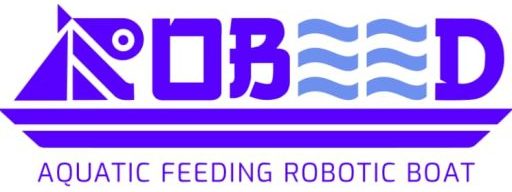
How Fish-Feeding Boats Contribute to Improved Fish Health and Growth
Introduction
Fish-feeding boats play a vital role in the success of aquaculture operations, as they directly influence the health, growth, and overall well-being of the fish. In recent years, fish-feeding boats have emerged as a game-changer in the aquaculture industry. These technologically advanced boats provide automated and precise feeding solutions that have revolutionized fish farming practices. By utilizing advanced automation systems, fish-feeding boats ensure accurate and timely feeding, eliminating the risk of underfeeding or overfeeding. the precision in feeding practices leads to improved fish health and accelerated growth rates.
Here, we will explore various strategies that fish-feeding boats contribute to fish health and growth. From accurate and timely feeding to improved feed utilization, fish-feeding boats optimize the nutritional intake of fish, resulting in healthier and more robust individuals. additionally, these boats enable fish farmers to monitor and adjust environmental parameters, creating optimal conditions for fish growth. The uniform distribution of feed ensures that all fish have equal access to food, promoting consistent growth rates and higher-quality fish products.
By exploring the multifaceted benefits of fish-feeding boats, this blog aims to highlight how these innovative technologies contribute to the overall profitability of fish farming operations. With improved fish health and accelerated growth rates, fish farmers can increase their yields, meet market demands, and ultimately achieve higher profitability in the aquaculture industry.
Accurate and timely feeding:
Accurate and timely feeding is paramount for fish health and growth, and fish-feeding boats excel in this aspect. Fish-feeding boats equipped with advanced automation systems provide precise and efficient feeding solutions. The automated systems can be programmed to dispense feed at specific intervals and in the right quantities, ensuring that fish receive their nutritional requirements consistently.
By maintaining optimal feeding schedules, fish-feeding boats eliminate the risks associated with underfeeding or overfeeding. Underfeeding can lead to malnutrition, stunted growth, and weakened immune systems, making fish more susceptible to diseases. On the other hand, overfeeding can lead to excess waste, compromised water quality, and increased stress levels among fish. By avoiding these extremes, fish-feeding boats promote balanced nutrition, improved immune system function, and reduced stress levels in fish.
Proper and accurate feeding practices contribute to overall better fish health. When fish receive the necessary nutrients in the right amounts and at the right times, they experience enhanced growth rates, increased resistance to diseases, and improved overall well-being. The result is a healthier and more robust fish population, which not only translates into higher profitability for fish farmers but also ensures the production of high-quality fish products for consumers.
Improved feed utilization:
Accurate and timely feeding is paramount for fish health and growth, and fish-feeding boats excel in this aspect. Equipped with advanced automation systems, these boats provide precise and efficient feeding solutions. The automated systems can be programmed to dispense feed at specific intervals and in the right quantities, ensuring that fish receive their nutritional requirements consistently.
By maintaining optimal feeding schedules, fish-feeding boats eliminate the risks associated with underfeeding or overfeeding. Underfeeding can lead to malnutrition, stunted growth, and weakened immune systems, making fish more susceptible to diseases. On the other hand, overfeeding can lead to excess waste, compromised water quality, and increased stress levels among fish. By avoiding these extremes, fish-feeding boats promote balanced nutrition, improved immune system function, and reduced stress levels in fish.
Proper and accurate feeding practices contribute to overall better fish health. When fish receive the necessary nutrients in the right amounts and at the right times, they experience enhanced growth rates, increased resistance to diseases, and improved overall well-being. The result is a healthier and more robust fish population, which not only translates into higher profitability for fish farmers but also ensures the production of high-quality fish products for consumers.
Monitoring and adjusting environmental parameters:
Monitoring and adjusting environmental parameters is another significant advantage of fish-feeding boats. These boats are equipped with advanced monitoring systems that continuously collect real-time data on essential water quality parameters. Parameters such as temperature, dissolved oxygen levels, and pH levels are crucial factors that directly influence fish health and growth.
By closely monitoring these parameters, fish farmers can gain valuable insights into the environmental conditions within the fish farm. if the water temperature becomes too high, for example, adjustments can be made to the feeding schedule. Feeding during cooler periods of the day can help prevent unnecessary stress on the fish. Similarly, if dissolved oxygen levels are low, adjustments can be made to ensure adequate aeration and oxygenation of the water.
Maintaining optimal environmental conditions through monitoring and adjustment contributes to improved fish health and well-being. Fish that are kept in an environment with suitable temperature, oxygen levels, and pH levels experience reduced stress, lower mortality rates, and faster growth rates. By providing the ideal conditions for fish growth, fish-feeding boats play a vital role in maximizing the potential of aquaculture operations.
Overall, the ability to monitor and adjust environmental parameters is a valuable feature of fish-feeding boats. It allows fish farmers to proactively address any issues and create optimal conditions for fish health and growth, ultimately leading to increased profitability and success in the aquaculture industry.
Uniform distribution of feed:
In addition to accurate and timely feeding, fish feeding boats also excel in the uniform distribution of feed. The automated feeding systems on these boats are designed to evenly distribute feed throughout the fish farm. This eliminates any competition for food among the fish, ensuring that all individuals have equal access to nutrition.
By preventing larger or more dominant fish from monopolizing the feeding process, fish-feeding boats promote a more equitable distribution of feed. This leads to more uniform growth rates among the fish population, as all individuals receive their fair share of nutrients. The result is a more balanced and consistent growth pattern, with fish reaching their full potential in a synchronized manner.
The uniform distribution of feed has several benefits. Firstly, it reduces stress and aggression among the fish, as they do not have to compete for food. this contributes to a calmer and healthier fish population. Secondly, it leads to higher-quality fish products. Fish that have received consistent and adequate nutrition exhibit improved body condition, higher flesh quality, and enhanced taste. These factors ultimately command better market value and profitability for fish farmers.
By ensuring the uniform distribution of feed, fish feeding boats play a crucial role in optimizing the growth and quality of the fish population. This further solidifies their contribution to enhancing fish health and growth, ultimately leading to increased profitability and success in the aquaculture industry.
conclusion:
In conclusion, fish-feeding boats play a crucial role in improving fish health and growth in aquaculture operations. The accurate and timely feeding practices offered by these boats ensure that fish receive optimal nutrition, leading to enhanced overall health and increased resistance to diseases. Moreover, the precise feeding capabilities of fish feeding boats minimize feed wastage and improve feed utilization, reducing feed costs for fish farmers.
The ability to monitor and adjust environmental parameters also contributes to creating optimal conditions for fish growth. The uniform distribution of feed ensures that all fish have equal access to food, promoting more uniform growth rates. Overall, fish-feeding boats are a valuable tool in maximizing fish health and growth, ultimately leading to increased profitability for fish farmers in the aquaculture industry.

